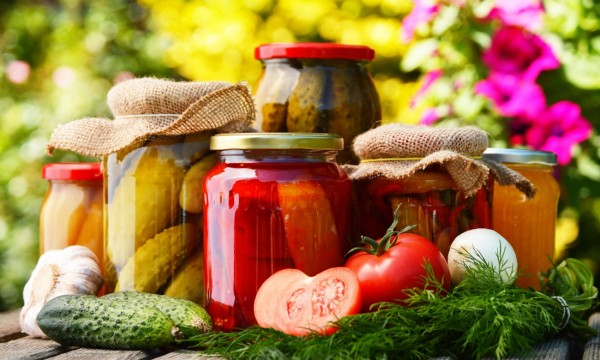Preserving food without electricity or refrigeration techniques is a valuable skill for those living in rural areas or homesteading. Whether it’s due to power outages, off-grid living, or the desire to reduce reliance on modern conveniences, there are several methods you can utilize to keep your food fresh and safe for extended periods. In this article, we will explore various traditional techniques that have been used for centuries.
1. Canning: Canning is one of the most popular and effective ways to preserve food without electricity. This method involves sealing foods in airtight jars or cans after heating them at high temperatures to kill microbes and prevent spoilage. Fruits, vegetables, jams, jellies, pickles, and even meats can be safely canned using either a water bath canner (for acidic foods) or a pressure canner (for low-acid foods).
2. Fermentation: Fermenting food not only extends its shelf life but also enhances its flavor and nutritional value. Vegetables like cabbage can be transformed into sauerkraut by packing them tightly in a crock with salt and allowing natural bacteria to convert sugars into lactic acid over time. Similarly, cucumbers turn into delicious pickles through fermentation.
3. Smoking: Smoking is an ancient preservation technique that imparts unique flavors while preserving meat and fish. By exposing them to smoke from burning wood chips or sawdust at low temperatures over an extended period of time, harmful bacteria are inhibited from growing.
4. Drying: Drying is another efficient way to preserve fruits, vegetables, herbs, and even meats without electricity or refrigeration. The process involves removing moisture from the food until it becomes lightweight and shriveled but still retains its nutrients. Sun drying is the simplest method where you place sliced produce on racks under direct sunlight until fully dehydrated; alternatively, you could use a dehydrator if available.
5. Root Cellaring: Root cellars are underground storage areas that take advantage of the earth’s natural insulation to keep food cool and prevent spoilage. These structures can be built using various materials like concrete, wood, or even dug directly into a hillside. Vegetables such as potatoes, carrots, beets, and apples can last for months in a root cellar when stored properly.
6. Salt Preservation: Salting is an ancient technique used to preserve meat and fish by drawing out moisture and creating an environment hostile to bacteria growth. By heavily salting the food and storing it in cool conditions, you can extend its shelf life significantly. This method has been used for centuries with items like salted pork or dried salted cod.
7. Pickling: Pickling involves immersing fruits or vegetables in a solution of vinegar, water, sugar, spices, and salt to create a preserved product known as pickles. The acidity of the vinegar helps inhibit bacterial growth while enhancing flavor profiles.
8. Lactic Acid Fermentation: Lactic acid fermentation is another form of fermentation that preserves vegetables without the use of vinegar or heat processing. By submerging vegetables in brine solutions made from water and salt (usually around 2-3% salt concentration), beneficial bacteria convert sugars into lactic acid which acts as a natural preservative.
In conclusion, mastering these traditional food preservation techniques allows you to store surplus produce without relying on electricity or refrigeration methods commonly found in modern households. Experimenting with these methods will not only help you become more self-sufficient but also open up new culinary possibilities by preserving flavors year-round. Remember to follow proper safety guidelines throughout each preservation process to ensure your preserved foods remain safe for consumption even after extended periods of time without refrigeration or electricity availability.


Leave a comment